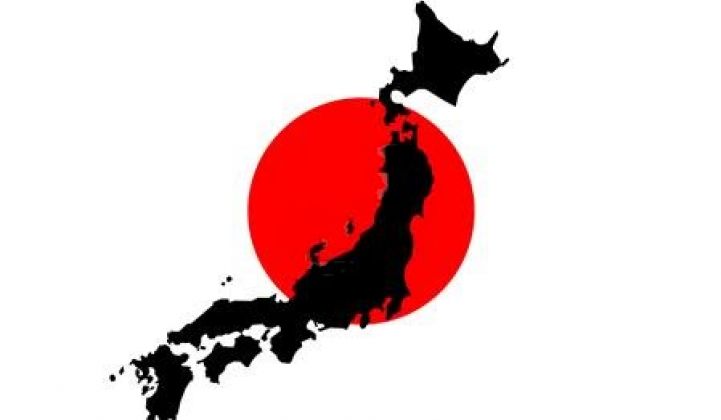Can solar replace retired nuclear in Japan? Will Japan's booming solar market have legs or will it fade like a FIT?
Before the Fukushima nuclear disaster, Japan had about 50 gigawatts of electrical capacity from 50 nuclear reactors. Just two of those reactors have been restarted -- but others will come on-line as they pass safety checks. Nuclear business, jobs, and politics will likely trump anti-nuclear sentiment in Japan.
While those reactors are offline, Japan makes up for the loss of 25 percent of its baseload power with fossil fuel imports, along with utility rate increases to pay for the fuel.
If solar is to help make up the shortfall, then the Japanese PV market will have to field unprecedented growth. And 2013 looks to be an impressive start to that growth curve. The question is if it can keep pace.
With about 1.7 gigawatts shipped in the first quarter of the year, the Japanese market is expected to reach 5.3 gigawatts in 2013, with the potential to surprise on the upside to 6.1 gigawatts, according to GTM Research's Scott Burger. That puts Japan in a position to eclipse Italy and Germany and slip into the second spot behind new global solar market leader China. But because system pricing in Japan is expensive, Japan could be the largest market in dollars, if not in megawatts.
This growth is driven by Japan's relatively high 38 cents per kilowatt-hour feed-in tariff (FIT) with a ten-year term for small rooftops and twenty years for larger installations.
The market is clearly expanding incredibly rapidly, said GTM's Burger, who added, "The utility and commercial markets are exploding, while the residential market is continuing its relatively steady growth." He provided stats with data from J-PEC, the branch of METI responsible for recording residential installs, and JPEA, the organization responsible for reporting shipments.
- Residential installs 1Q13: 356 megawatts
- Commercial installs 2Q12 to Feb. 2013 (10 kilowatts to 1 megawatt): 309 megawatts
- Large-scale installs 2Q12 to Feb. 2013 (>1 megawatt): 110 megawatts
- Commercial applications 2Q12 to Feb. 2013: 4,575 megawatts
- Large-scale applications 2Q12 to Feb. 2013: 6,436 megawatts
- Residential shipments 1Q13: 562 megawatts -- up 70 percent over 1Q12.
- Commercial shipments 1Q13: 407 megawatts -- up 89 percent over 4Q12 and 5,187 percent over 1Q12.
- Large-scale shipments 1Q13: 762 megawatts -- up 146 percent over 4Q12 and 1,378 percent over 1Q12.
- Total shipments 1Q13: 1,734 megawatts
GTM's Burger notes, "[A]pplications are not installations, and frankly aren't all that important. The application step is simply a formality. Once proper paperwork has been completed, the developer must secure permitting, seek a FIT approval from the local utility (often very difficult given grid capacity constraints), and secure financing. Take Chile as an example: over 3.49 gigawatts of projects have been approved for development, but only 171.6 megawatts have PPAs or are operating. The real challenge in Japan is securing proper permitting and getting grid interconnection approval from the utility. Our channel checks indicate that projects are being sized down or rejected due to grid congestion or lack of infrastructure."
High-efficiency photovoltaics have some advantage in Japan, given their ability to generate more power from smaller homes and rooftops. SunPower, the PV efficiency leader, is exploiting this strength and seeing record demand in Japan through its relationship with Sharp and Toshiba.
Scott Burger points out that although the Japanese market had long been considered a "closed" market, the numbers show otherwise. Sharp remains the number-one supplier, followed by Kyocera, but foreign suppliers are doing quite well. This isn't limited to high efficiency providers. Companies that have been in the market with high local visibility, such as Canadian Solar, which sponsors a major Japanese baseball team, have done quite well.
Canadian Solar sold roughly 85 megawatts into the Japanese market in 1Q13 and expects 30 percent of its year-end revenue to come from Japan. Another Chinese company, JA Solar, has done extremely well selling white-label panels to large Japanese developers such as West Holdings Co. JA Solar shipped more modules to Japan in 1Q13 than it did in all of 2012, amounting to over 100 megawatts in the first quarter.
Overall, imported modules accounted for 49 modules of total shipments in Japan in 1Q13, up from roughly 5 percent in 1Q10.
Despite all the talk of a "post-subsidy solar market," Japan's feed-in tariff, like all FITs, has the potential to overheat and deflate if not carefully administered. (See our research and reporting on feed-in tariff adventures in Romania, Italy, and the Czech Republic.)



